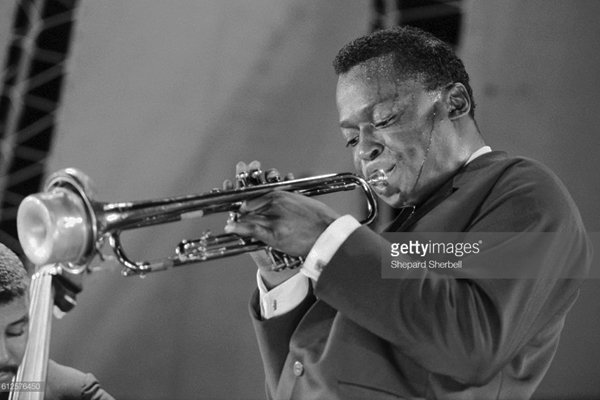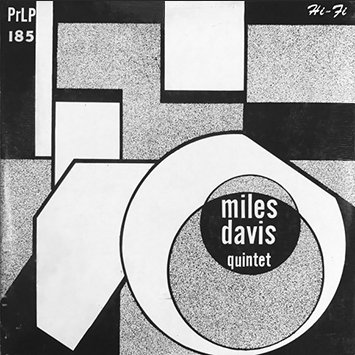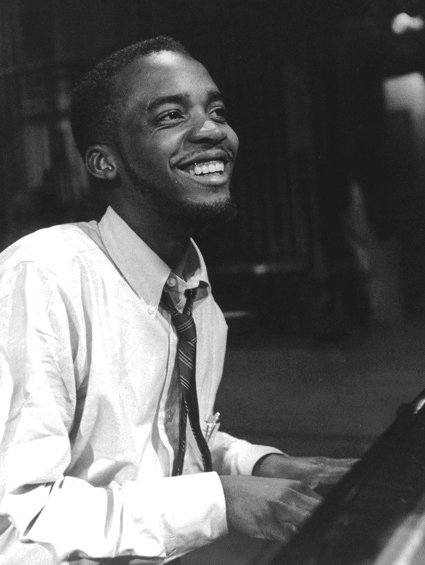Wayne Shorter (saxo tenor), Miles Davis (trompeta), Herbie Hancock (piano), Ron Carter (contrabajo) y Tony Williams (batería). Extraído del álbum Miles Smiles (1967) de Miles Davis.
En 1953 Miles Davis se fue a casa de su padre en St. Louis durante varios meses para abandonar la heroína. Sin embargo, mientras tocaba con el contrabajista Charles Mingus y el batería Max Roach cayó otra vez en la adicción, así que regresó a casa de su padre determinado a acabar definitivamente con ella. Se encerró en la casa de los huéspedes durante una semana hasta que superó el síndrome de abstinencia. Después se trasladó a Detroit, donde era más difícil encontrar droga, y tocó con el grupo del saxofonista tenor Billy Mitchell en el club Blue Bird. En 1954, cuando se encontró física y mentalmente más fuerte, se fue otra vez a Nueva York, empezó a ir a un gimnasio y volvió a trabajar con el sello Prestige, grabando ese mismo año Miles Davis Quintet, Miles Davis All Star Sextet, Miles Davis with Sonny Rollins y Miles Davis All Stars.
In 1953 Miles Davis went to his father’s house in St. Louis for several months to quit heroin. However, while playing with double bassist Charles Mingus and drummer Max Roach he fell back into addiction, so he returned to his father’s house determined to end it for good. He locked himself in the guest house for a week until he got over the withdrawal. He then moved to Detroit, where drugs were harder to find, and played with tenor saxophonist Billy Mitchell’s band at the Blue Bird club. In 1954, when he found himself physically and mentally stronger, he went to New York again, started going to a gym and returned to work with the Prestige label, recording that same year Miles Davis Quintet, Miles Davis All Star Sextet, Miles Davis with Sonny Rollins and Miles Davis All Stars.


Davis abandonó el estilo bebop influido por el pianista Ahmad Jamal y grabó Blue Haze (1956), Bags’ Grove (1957), Walkin’ (1957) y Miles Davis and the Modern Jazz Giants (1959), donde utilizó una sordina Harmon. Fue un pionero del hard bop, que era más relajado que el bebop y con armonías y melodías más sencillas. A menudo utilizaba música popular y estándars norteamericanos como base para la improvisación, que era más espaciosa. El hard bop también era distinto al cool jazz por su ritmo más impulsivo y su acercamiento al blues, el góspel y el rhythm and blues. Miles Davis se volvió frío, distante y fácilmente irascible. Despreciaba a los críticos, al público y a los demás músicos. En 1955 se sometió a una operación para extirpar pólipos de su laringe. Aunque después de la intervención los médicos le indicaron que mantuviera silencio, tuvo una discusión que dañó para siempre sus cuerdas vocales, causándole una voz áspera durante el resto de su vida, por lo era llamado «príncipe de la oscuridad».
Davis abandoned the bebop style influenced by pianist Ahmad Jamal and recorded Blue Haze (1956), Bags’ Grove (1957), Walkin’ (1957) and Miles Davis and the Modern Jazz Giants (1959), where he used a Harmon mute. He was a pioneer of hard bop, which was more relaxed than bebop and with simpler harmonies and melodies. He often used popular music and American standards as a basis for improvisation, which was more spacious. Hard bop was also different from cool jazz in its more driving rhythm and its approach to blues, gospel and rhythm and blues. Miles Davis became cold, distant and easily irritable. He despised critics, audiences and other musicians. In 1955 he underwent an operation to remove polyps from his larynx. Although after the operation the doctors instructed him to keep quiet, he had an argument that damaged his vocal cords forever, causing him to have a rough voice for the rest of his life, for which he was called “prince of darkness”.

El tema es rápido y directo, y Davis hace un solo poderoso y contundente apoyado por Williams de forma enérgica e impetuosa. Sus frases apresuradas se suceden a gran velocidad. A continuación entra Shorter tocando de forma acelerada y escalofriante con un discurso lleno de motivos sólidos y cambiantes. Le sigue Hancock con una línea melódica incisiva y trepidante demostrando su imaginación y destreza. Para finalizar, el grupo reexpone el tema, aunque Carter y Williams siguen tocando un rato más.
The theme is fast and direct, and Davis makes a powerful and forceful solo supported by Williams in an energetic and impetuous way. His hasty phrases follow one another at great speed. Shorter then enters playing in an accelerated and chilling way with a discourse full of solid and changing motifs. Next Hancock comes in with an incisive and fast-paced melodic line demonstrating his imagination and dexterity. To finish, the group re-exposes the theme, although Carter and Williams continue to play for a while longer.

Translated with the help of DeepL
℗ Columbia Records


Si te ha gustado el tema, quizá querrás escuchar también los anteriores de este álbum:
If you liked the track, you might also want to listen to the previous ones on this album:


¡Enhorabuena!
✅ Has hecho un buen trabajo, por lo cual tu publicación ha sido valorada y ha recibido el apoyo de parte de CHESS BROTHERS ♔ 💪
♟ Te invitamos a usar nuestra etiqueta #chessbrothers y a que aprendas más sobre nosotros.
♟♟ También puedes contactarnos en nuestro servidor de Discord y promocionar allí tus publicaciones.
♟♟♟ Considera unirte a nuestro trail de curación para que trabajemos en equipo y recibas recompensas automáticamente.
♞♟ Echa un vistazo a nuestra cuenta @chessbrotherspro para que te informes sobre el proceso de curación llevado a diario por nuestro equipo.
🥇 Si quieres obtener ganancias con tu delegacion de HP y apoyar a nuestro proyecto, te invitamos a unirte al plan Master Investor. Aquí puedes aprender cómo hacerlo.
Cordialmente
El equipo de CHESS BROTHERS